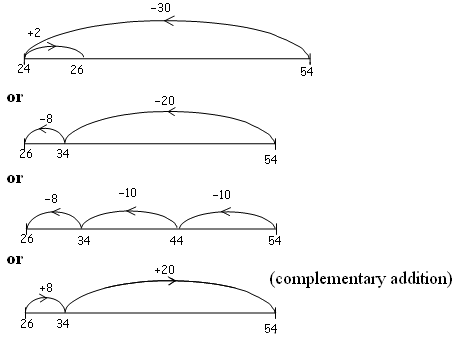Number line addition and subtraction
This task is about showing how to solve equations on a number line.
Read through the example in the box before you start.
|
Example: Sarah had to solve 16 +
 = 28 using a number line. = 28 using a number line.
She knew that 16 + 4 = 20, and that 20 + 8 = 28.
So she showed this as jumps on the number line and then wrote the answer in the box:  |
For each question below, show how to solve the equations on the number line, and write the answer in the empty box.
a) Use the number line below to show how to solve: 22 +  = 46
= 46
 = 46
= 46
b) Use the number line below to show how to solve: 38 +  = 71
= 71
 = 71
= 71
c) Use the number line below to show how to solve: 37 –  = 19
= 19
 = 19
= 19

d) Use the number line below to show how to solve: 54 –  = 26
= 26
 = 26
= 26






